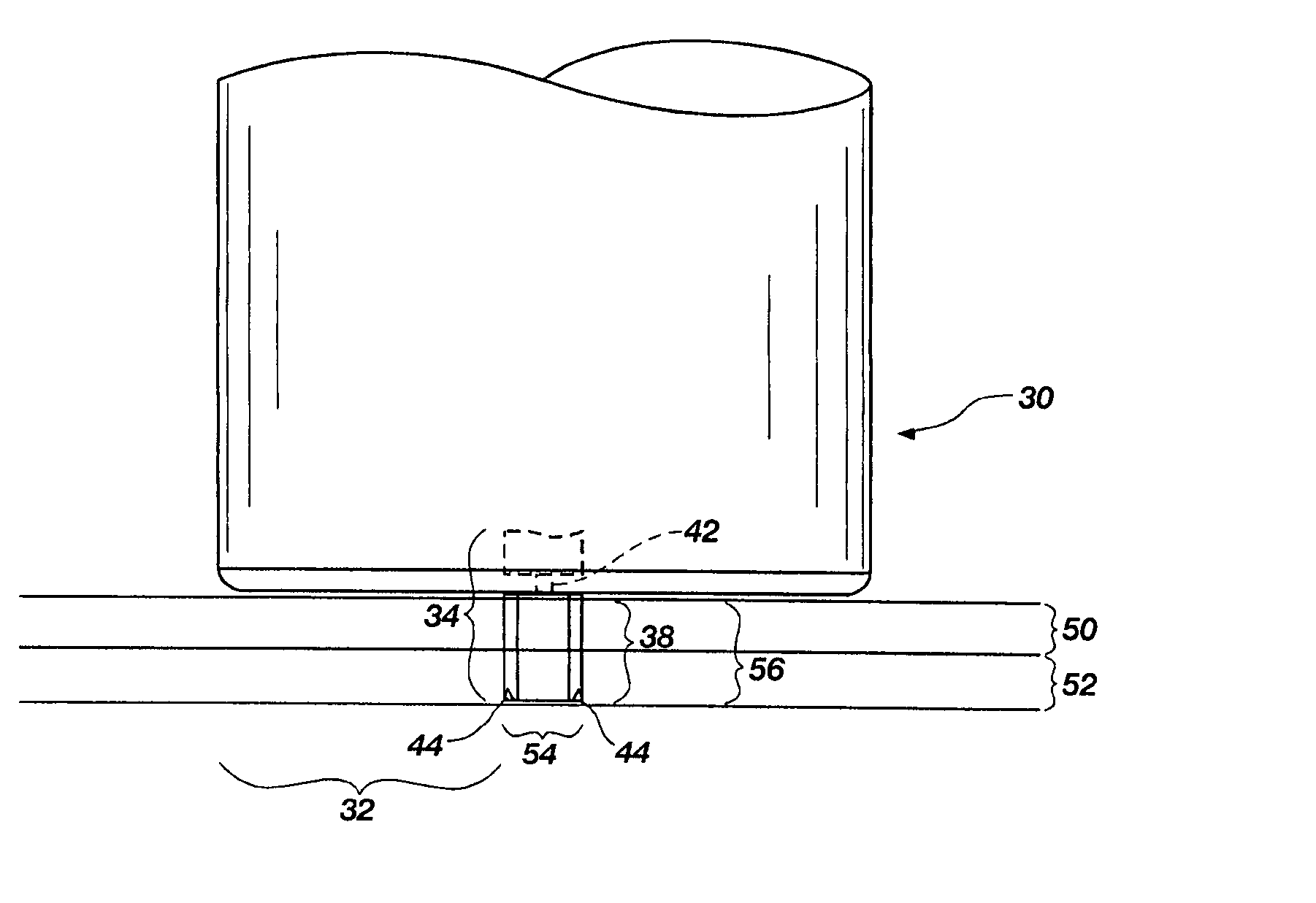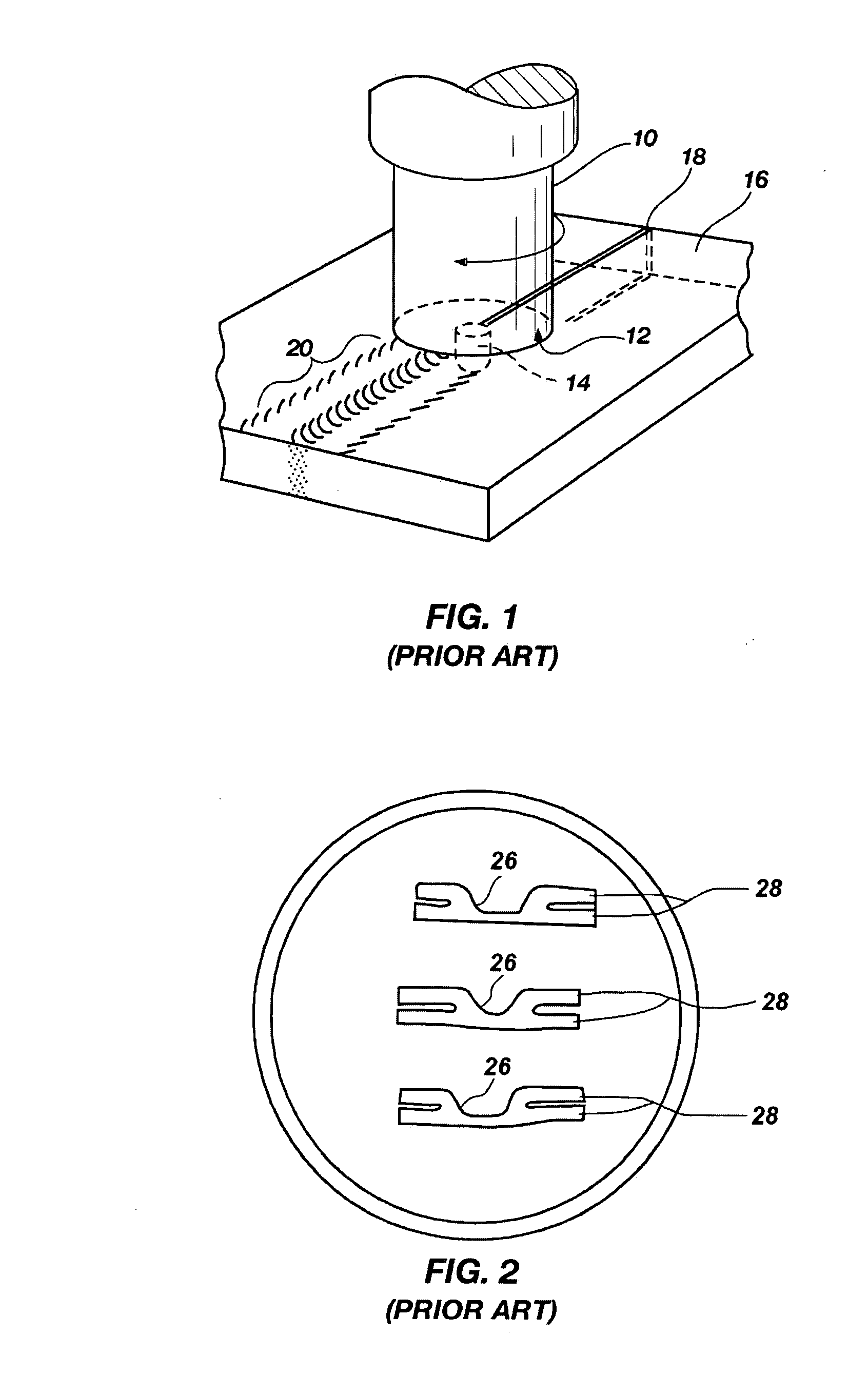Three-body joining using friction stir processing techniques
a technology of friction stir and processing technique, applied in the direction of soldering apparatus, manufacturing tools,auxillary welding devices, etc., can solve the problems of limiting load carrying capacity, inability to use screws or bolts, and high cost of multiple components and assemblies
- Summary
- Abstract
- Description
- Claims
- Application Information
AI Technical Summary
Benefits of technology
Problems solved by technology
Method used
Image
Examples
Embodiment Construction
[0029] Reference will now be made to the drawings in which the various elements of the present invention will be given numerical designations and in which the invention will be discussed so as to enable one skilled in the art to make and use the invention. It is to be understood that the following description is only exemplary of the principles of the present invention, and should not be viewed as narrowing the claims which follow.
[0030] In a first aspect of the invention, a novel approach is used to solve many of the joining problems mentioned above. A rotating friction stir riveting tool having a non-consumable shoulder combined with a detachable and at least partially consumable pin forms the basis of a friction stir riveting joining method of the present invention. The pin may be totally consumable or partially consumable. FIG. 3 shows an example of how the tool can be constructed.
[0031]FIG. 3 shows a friction stir riveting tool 30 having a shoulder area 32 and a detachable an...
PUM
| Property | Measurement | Unit |
|---|---|---|
| Diameter | aaaaa | aaaaa |
| Speed | aaaaa | aaaaa |
Abstract
Description
Claims
Application Information
 Login to View More
Login to View More - R&D
- Intellectual Property
- Life Sciences
- Materials
- Tech Scout
- Unparalleled Data Quality
- Higher Quality Content
- 60% Fewer Hallucinations
Browse by: Latest US Patents, China's latest patents, Technical Efficacy Thesaurus, Application Domain, Technology Topic, Popular Technical Reports.
© 2025 PatSnap. All rights reserved.Legal|Privacy policy|Modern Slavery Act Transparency Statement|Sitemap|About US| Contact US: help@patsnap.com



